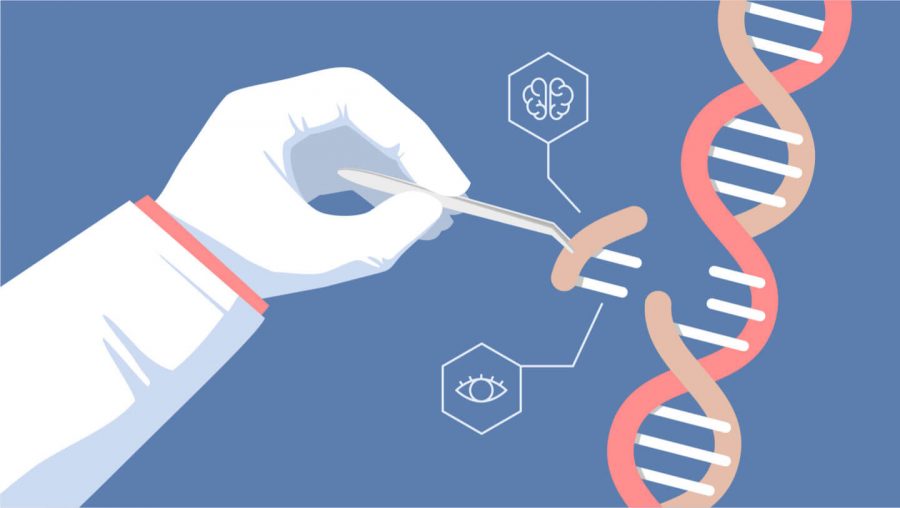CRISPR and Moral Missteps
January 9, 2019
Cloning is suddenly possible. In the past, it was science fiction, but surprisingly quickly, it became a reality. Now, we have gene modification, in the form of Clustered Regularly Interspaced Short Palindromic Repeats, or CRISPR. This technology is being used right now to change children’s appearance, gender, and even giving children disease immunity. The biggest question is, is it moral?
Many people say no. He Jiankui, a Chinese biologist, says yes.
Jiankui has successfully used the gene-editing tool CRISPR-Cas9 to create the first two genetically modified humans, who happen to be twins. Although it was successful, he is currently being persecuted. This technology is in its infancy, and forcing it upon an embryo who will have to grow up fearing the possibility of extreme genetic complication is not being taken lightly.
CRISPR is the system with which Jiankui modified these twins. Their father is HIV positive, and although he has little to no symptoms himself due to the medication that has already been developed to help treat this disease, Jiankui reported that kids had been out of the question for him and his wife because the father did not want his own kids to have to go through what he had gone through. He Jiankui used it to modify their genetic code so that they are apparently immune to HIV, which many scientists argue is a highly treatable disease. A Stanford law and ethics professor called the experiment “reckless [because] of a terrible benefit/risk ratio for the baby.”
Jiankui ran from authorities attempting to persecute him for this breach in scientific etiquette, and left his own presentation of his findings early to do so. Now, he has been found and is being kept under unknown circumstances by unidentified guards in a guest apartment at his old university, the Southern University of Science and Technology in China.
He had worked there in the past, as well as working as a postdoc fellow with Stephen Quake at Stanford University.
This entire process has been incredibly shocking to the genetic sciences community, and has drawn a lot of unwanted attention from high places. No one is sure what will happen to Jiankui, or his family. According to The New York Times, his wife was seen in the guarded apartment with him, holding a baby, which only makes the situation more confusing. No sources currently have said anything about He Jiankui having his own child, and if that is his child, then why would he want it to be trapped in the apartment with him, in a potentially volatile situation, along with his wife?
CRISPR itself is shockingly straight forward, though. As explained by a site called Science News for Students, it simply takes advantage of an already used enzyme, called cas9, which is able to “unzip” certain parts of the DNA helix. They direct this enzyme by using engineered RNA, which will bring the enzyme to the spot that is coded onto them. There, the RNA bonds with the DNA, and the cas9 “snips” the DNA at that point. When the DNA strands break, the cell immediately begins to repair them, but in the process, the molecules that make up DNA, get erased or separated from the DNA. In this way, it is very easy to erase certain genes. It is also possible to, using the same tool, add nucleotides where they have been subtracted, but that process is more complicated due to placement.
Simple CRISPR systems are on sale for biology students at less than $200, an incredibly low price considering how cutting-edge the technology is.
In the field of genetics, there are huge leaps being made. It is progressing faster than has ever been seen in the past. However, He Jiankui’s misstep could slow that progress to a stop, depending on how big the federal backlash is, both in China and the U.S.


Janette Smuts • Jan 13, 2019 at 9:06 am
Casey, I am more than impressed with your major contributions to your school newspaper. You have such insight, it’s just incredible. Well done!!!!!!